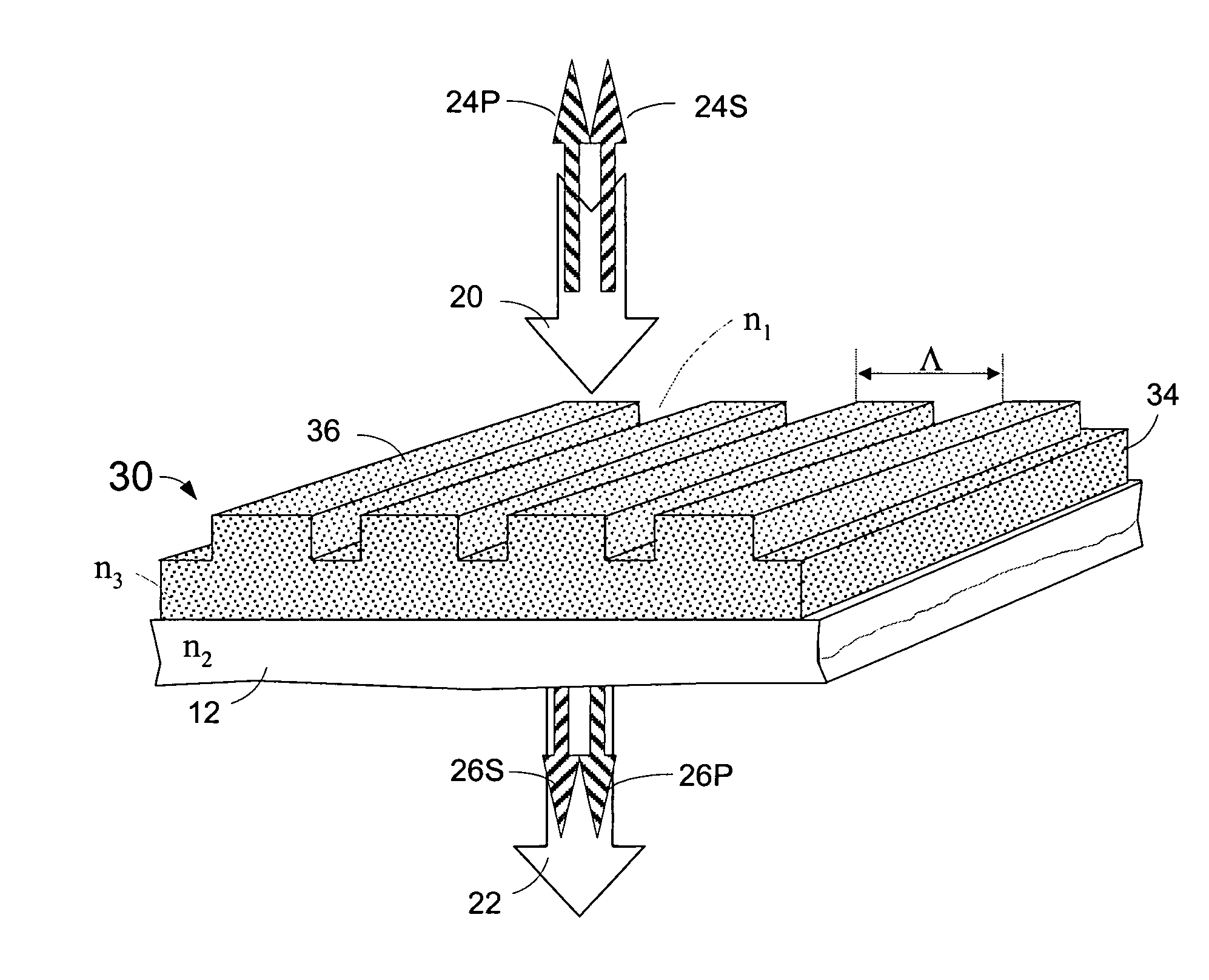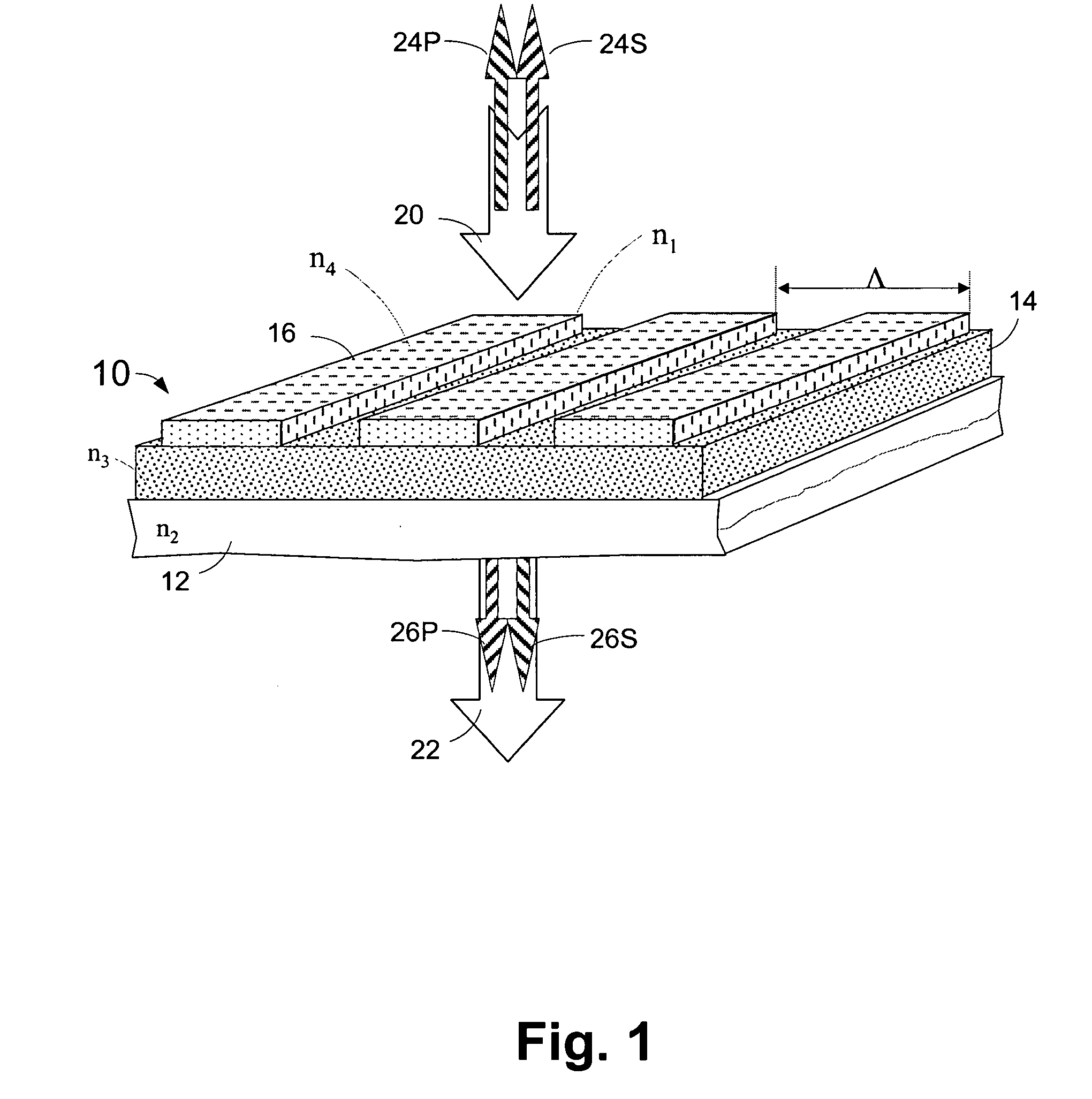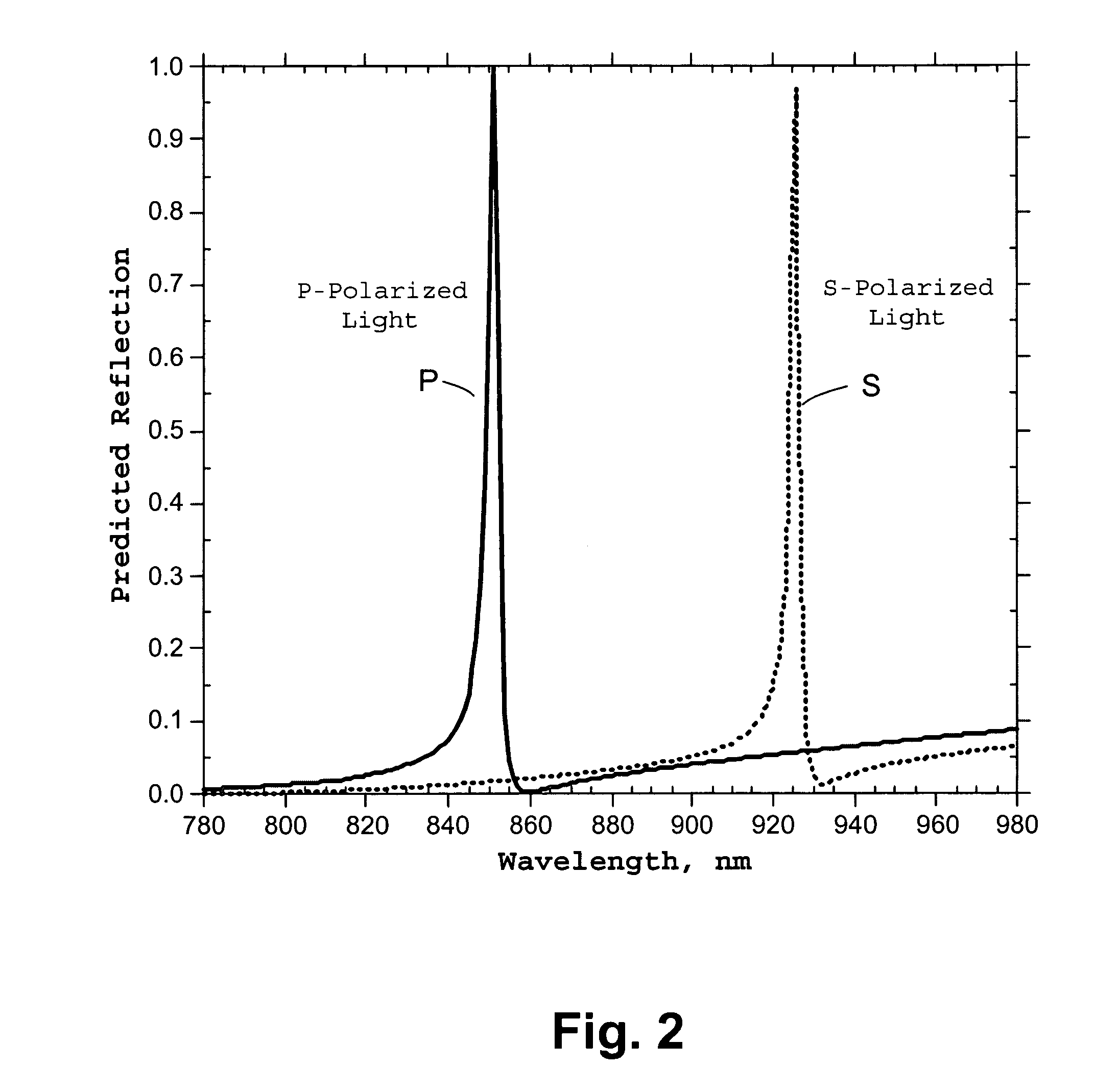[0016] In the following specification, polarizing
surface structure waveguide filters are disclosed. The filters serve to transmit a specific polarization state for a given range of wavelengths while reflecting the orthogonal polarization state. This effect is created by a
surface structure waveguide that is composed of asymmetric features such as an array of lines. The features of the structural
waveguide will resonate with one
wavelength of light that is polarized parallel to the
grating lines, and with another wavelength of light that is polarized in a direction perpendicular to the
grating lines. The same effect would be produced with a two-dimensional array of structures where the individual features are asymmetric such as rectangles, or where the structure spacing of the array is different in one direction than the structure spacing in the orthogonal direction. When the illuminating source contains a
narrow range of wavelengths as with
laser or
light emitting diode (LED) light sources, a polarizing
surface structure waveguide filter can be configured to transmit or reflect polarized light that matches the
laser or LED wavelength. The same filter illuminated by a randomly polarized broad-band
light source will reflect or transmit two narrow-band spectral regions that are polarized with orthogonal states. By designing an asymmetric surface structure
waveguide filter that operates on multiple wavelength bands simultaneously, a polarizing multi-band filter can be realized that is capable of polarizing the discrete spectral content of the typical
fluorescent lamp and LED light sources used to illuminate liquid
crystal displays. This inventive device combines the benefits of simple inexpensive manufacturing found with
surface relief microstructure optical retarders and waveguide resonant filters, with the low-loss large-area polarizing function found with stretched
dielectric film stacks.
[0018] A large application for a non-absorbing
broad band microstructured reflective
polarizer is found in the back lights used to illuminate LCDs. As described above LCDs employ absorptive polarizers that selectively absorb all light of one polarization state. A non-absorbing reflective polarizer based on microstructures would provide a significant increase in LCD brightness by replacing the absorbing polarizers with an efficient polarizer that reflected the unwanted polarization state back into the
light source where it would undergo polarization conversion and be recycled as
transmitted light. The microstructures would allow the low cost high-volume manufacturing of such a polarizing film that could effectively compete in the one billion dollar reflective polarizer market currently enjoyed exclusively by the 3M company with their DBEF product.
[0019] One aspect of the present invention involves a guided-mode
resonance surface structure
optical filter that simultaneously filters and polarizes a narrow-range of light wavelengths contained within a broad-band
light source. The surface structure
polarizing filter provides high efficiency, reflecting or transmitting polarized light without loss due to absorption as found in conventional polarizing devices and color filters. Low cost manufacturing is also afforded through replication of the
surface relief structures comprising the
polarizing filter.
[0021] Another aspect of the present invention is directed towards a polarizing
optical filter having one or more guided-mode surface structures to reflect or transmit polarized light in one or more discrete bands of light wavelengths from a
broad spectrum of incident light. The surface structures are arranged, or stacked, such that the illuminating broad-band light encounters each filter in series as it propagates. Each filter in the stack is designed to polarize and reflect or transmit a narrow-band of wavelengths that matches a
spectral component of the illuminating source. Each filter in the stack covers an area at least as large as the illuminating light source. For example, three polarizing surface structure filters that polarize and reflect or transmit red (R), green (G), and
blue light (B) respectively, could be layered to form an RGB color filter sheet where the RGB filters are set to match the spectral content of the light sources used in most liquid
crystal displays. Such a
polarizing filter sheet would be a low-cost competitor to the 3M reflective polarizer film described above.
[0024] In another application, a reflective polarizing surface structure
optical filter could be used as a laser cavity mirror, or a transmissive filter could be built onto the facets of the lasing medium. Both filters would offer the particular
advantage of
high transmission of the pump light illumination combined with narrow-band reflection of the
laser light. In addition, the filters can be constructed from the lasing medium itself to reduce
thermal lensing problems and the
thermal damage typically found with multiple-layer thin-film filters used with
high power lasers.
[0026] In still another application, polarizing surface structure filters can be provided to enhance the
signal discrimination in a laser
communications system. Amplitude modulated information could be encoded on one or more polarization states of a
laser light source. For example, a free-space laser communication
system between Earth and Mars could employ polarized light and polarizing narrow-band filters to support communication for an
extended time as the
orbit of Mars relative to the Earth causes an increase in
background light from the Sun.
 Login to View More
Login to View More  Login to View More
Login to View More 


